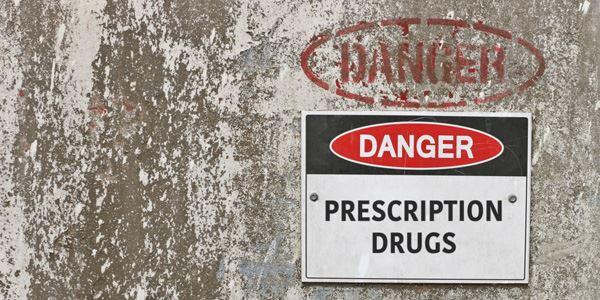The first step in recovery from prescription drug abuse is the detoxification stage. In this step, a person will remove the abused substance from his or her body. This happens by the individual ceasing to ingest the substance, paired with time for the remainder of the previously abused substance to vacate one’s body. During this stage, a person may experience any combination of the following withdrawal symptoms: insomnia, excessive sweating, muscle aches, anxiety, agitation, watery eyes, runny nose…etc. The severity of withdrawal symptoms will depend on the type or types of substance/s abused, the duration of one’s substance abuse, the dosage of one’s use, and the half-life of the substance. There are different options for people who require detox. Some people will choose to detox in their home with the help of a loved one, or even alone. Depending on the combination of substance abuse, the safest option for a person struggling with prescription drug abuse is to undergo a medically supervised detox. This allows for the individual to be more closely monitored and offers twenty-four-hour support for the person through his detox experience.
Treatment Programs
There are many treatment plans available nowadays for people who abuse prescription drugs. The specific drug of choice is not really important when it comes to a treatment program, as many will welcome people who are addicted to or abuse different substances. The various treatment plans can include inpatient programs (which are programs that require the individual to reside at the treatment facility for a certain length of time), outpatient programs (which are programs that offer more flexible attendance hours without the individual living at the treatment facility), group therapy programs (which rely heavily on group therapy to help treat one’s addiction), and individualized therapy programs (where the individual is paired with a therapeutic or medical professional and works with them privately throughout his or her recovery process). Additionally, there are treatment programs that offer support for individuals who may be suffering from various comorbidities or dual diagnoses.
Aftercare
Once a person completes his or her treatment program it is essential to have a proper aftercare plan in place. A significant amount of information was laid out during one’s treatment program and it is imperative for the person to continue to implement and integrate this information into his or her daily life. An aftercare plan is a unique plan catered to each specific individual’s needs. This can include a detailed plan or a vaguer plan. Some people, for example, will work best if there is a daily routine laid out for him or them, and others will respond best to a list of commitments he or they must meet. Each person’s aftercare plan may appear slightly different, but the primary goal, maintaining one’s sobriety, will be the same.
People refer often to marijuana as the most widespread gateway drug, but it is more and more common for prescription drugs to be the first substance a person uses and abuses. This is partially due to the fact that prescription drugs are so easily accessible. Drug abuse and addiction, no matter the substance, is a serious diseases. Substance abuse can be overwhelming, and the mere thought of considering treatment can be paralyzing. Please, do not delay in gathering further information and getting help. The risk of severe long-term damage rises with every dose, pill, shot…etc. of abused substance that is ingested.



